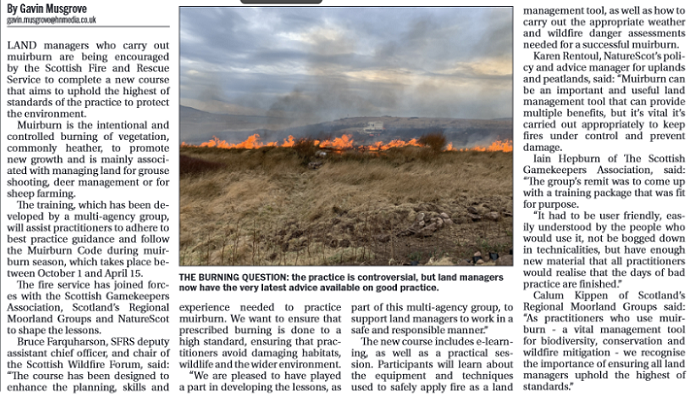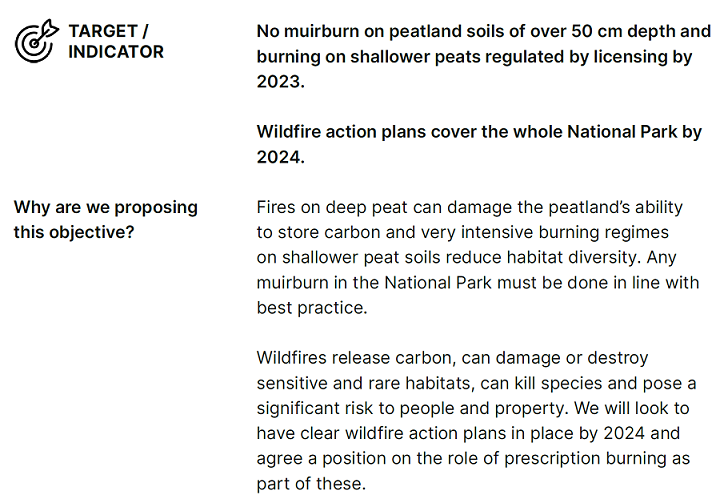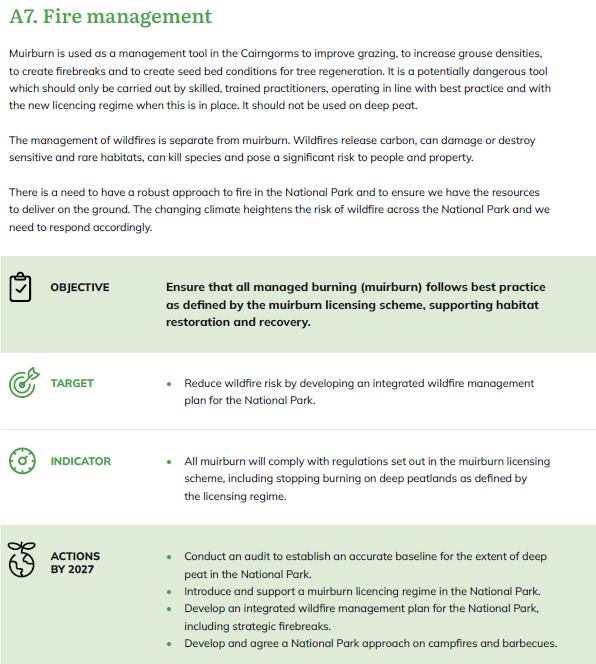
The Scottish Gamekeepers Association has long argued ((see here) that muirburn helps prevent devastating wildfires when the truth is that it is muirburn that has devastated nature across large swathes of Scotland. The fact that Fire and Rescue Scotland has chosen to invest resources in teaching gamekeepers how to “safely apply fire” suggests that they know that muirburn often gets out of control, spreading the devastation caused by burning further.
While from a narrow Fire and Rescue perspective it may be quite rational to devote scarce public resources to educating gamekeepers, the amount of resources that our public authorities devote to supporting muirburn by landowners, among whom are some of the richest people in the world, is significant. Besides Fire and Rescue Scotland both NatureScot and the Cairngorms National Park Authority, through the East Cairngorms Moorland Partnership, have been trying to improve muirburn practice in the National Park. As an indication of the value of this public subsidy, the Game and Wildlife Conservation Trust offer a muirburn advisory services that charges £820 plus VAT for a risk mapping report or £598 + VAT for a half-day of more general advice (see here).
The draft Cairngorms National Park Partnership Plan (NPPP) included a section on muirburn which included a commitment to produce wildfire action plans across the area by 2024 and to agree a policy on “prescription burning”:

The plan (see here) finally approved by the Minister for National Parks, the Green MSP Lorna Slater, was significantly different with muirburn and wildfires grouped under a new heading “fire management”:

Instead of muirburn being described as a damaging practice which releases carbon into the atmosphere and destroys biodiversity, all for the sake of producing large numbers of red grouse for shooters, it has been sanitised and become a “management tool”. Wildfires are treated something quite different to muirburn despite the fact that muirburn has been responsible for devastating “wildfires” (see here).
Indeed, although the way the policy is worded suggests muirburn is different from wildfires, everything that is said about the damaging consequences of wildfires (release of carbon, damage to habitats, killing animals and damaging property) applies to muirburn. Moreover, if the changing climate “heightens the risks of wildfires”, it also increases the risks associated with muirburn getting out of control. Hence perhaps the training by Fire and Rescue Scotland.
The commitment in the draft NPPP to end all burning on peat over 50cms thick has completely disappeared, as has the commitment to control burning on shallower peaty soils through grouse moor licensing by this year. Instead, 2027 is the new target for saying something about burning on peat, a delay of four years. This is not entirely the fault of the Cairngorms National Park Authority (CNPA), which appears completely under the control of central government that endlessly talks about the climate and nature emergencies but keeps delaying any reform that might make force landowners to make a difference.
This change in policy position by the CNPA allows it to justify forking out large sums of public money for peatland restoration, while doing nothing to prevent “sporting” landowners such as King Charles (see here) continuing to burn the land round about. A further waste of public funds.
What this demonstrates is the power of sporting landowners to subvert public policy and manipulate public authorities to act in their interests rather than the public interest. It should act as a warning to all those organisations who still hope that the Scottish Government’s proposals for grouse moor licensing will change anything (see here). What is needed is a complete ban on muirburn, starting in Scotland’s National Parks.
Source link
